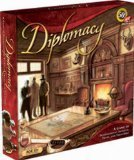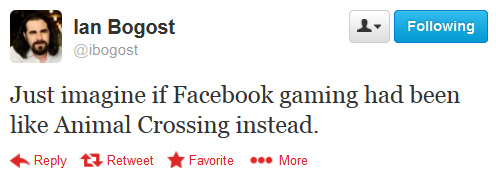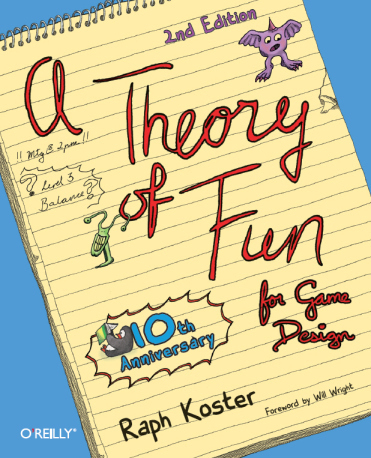Raph Koster's Blog, page 18
August 28, 2013
MMORPG.com interview

I didn’t plan it this way, but we have two interviews on back to back days! This one was for Adam Tingle over at MMORPG.com, and it focuses mostly on MMOs specifically, as you might expect, with a lot of retrospective stuff. You can read it here.
We talk a bit about the making of Ultima Online, the development travails of SWG, the promise of Metaplace, and even the origins of sandboxy features back in LegendMUD. A snippet:
MMORPG: Do you believe in structuring a players experience, or prefer giving them tools to create a more emergent adventure?
Raph Koster: Both, really. But I strongly believe that you can’t build the emergent tools on top of a static world. As soon as you decide to make storytelling or quests or whatever the basis of your experience, you sacrifice having dynamic and emergent things in the game, because you can’t break or upset all the static content. Whereas if you start with a foundation of simulation or UGC, and layer static stuff on top, that works fine, because the static content is built to assume shifting foundations.
August 27, 2013
Gamasutra interview about “What’s Next”

I did a little interview with Patrick Miller for Gamasutra, as part of the run-up to GDCNext. A snippet:
How do you see the role of games (and the kind of experience players expect) changing? Are there any games/other work do you see around you now that is indicative of an emerging trend in this regard — something which you think you’ll later point to as a watershed moment in the evolution of video games?
It feels like we are swimming in this water already and not realizing it. Just recently, Gone Home charted on Steam above some big AAA releases. That’s a landmark moment right there. The press has already turned the corner to a significant degree – the debates over the artistic merits of a title like BioShock Infinite were already louder to my ears than the sort of traditional review discussion we used to get. The titles under discussion by craftspeople at conferences are the indie games, not the AAA games. We’ve seen the rise of artist enclaves, bohemian attitudes, old guard resistance, jejune manifestos (mind you, I think virtually all manifestos are jejune) and all the rest.
I think the floodgates are open. We’re at the point now where the kids who grew up with widespread “mass market” gaming are adults and are steeped in the gamer culture and mindset, and with that is coming all the self-examination, the desire to see substantial thematic content, and so on. The revolution has happened.
via Gamasutra – What’s Next? Koster talks ‘the revolution’, future of games.
I am sure I will take flak for the jejune bit. #nodads 
August 13, 2013
Tools don’t stifle art!

Luke McMillan has a nice article on Gamasutra entitled “An Intro to RLD,” which is about using math to assess the difficulty of jumping puzzles (and by extension, other parts of the content ramp in your game design).
I’m not here to talk about the article. It’s a nice article. I’m here to talk about one of the reactions to it.
The article is a nice, straightforward illustration of how quantitative methods can bring greater clarity to something that designers do every day, usually by “feel.” And of course, the challenge with “feel” is that it only arises from experience. As I have termed it before, the “apprenticeship model” of learning game design: you do it until you develop the feel, and have internalized heuristics of your own for things like difficulty ramps. Then you struggle to communicate those heuristics to others, and they learn it the hard way themselves.
Michael Joseph, in the comments, states the following:
that the article shows “a desire to depersonalize game design”
that no one has “proved that ‘zen’ style of game design is a significant problem”
that these methods are “design encroachment tool by the business side so that any hairless monkey can churn out a game”
and that the method “reminds me of the Auto-Tune used by some singers with questionable talent.”
McMillan responded very politely to this comment. I on the other hand… this stuff makes me mad enough to be sarcastic and blunt. I apologize in advance to Joseph, since I know his track record in the industry, and it doesn’t seem reflective of the comments he’s making.
I can only presume that he thinks that measuring when cutting wood for a table is depersonalizing carpentry. Forgive me if I prefer not to live in a house he builds. I have not noticed any lack of creativity among architects simply because they measure stuff a lot.
The “Zen style” isn’t a problem, unless you are trying to, say, work with another designer and want to communicate with them. Or want to tweak your game balance. Or want to train a new designer. The reason it is a problem is simple: the lack of a common language. That would be why designers have been building a common language for decades now. There isn’t any need to “prove” this; a given designer either runs into these issues or they don’t. If they do, would you deny them the opportunity to try to fix it? If you don’t run into these issues, please share how you avoid them; I would be stunned if it didn’t turn out to be “depersonalized” craft language.
The elitism inherent in “with this tool, gosh, any hairless monkey can make a game” is shocking. At a time when the industry is in a ferment over increasing the democratization of game development, increasing access for the disadvantaged, increasing diversity and new voices, the idea that a tool is bad because it increases access is frankly appalling. I don’t think this how this comment was meant, which means it simply wasn’t thought about very hard.
Instead, I suspect (especially given the Auto-Tune comment) that it was meant as a cry on behalf of artistry instead of “soulless business,” similar to the piece by Liz Ryerson that I wrote about the other day. In which case, it misses its target. Plenty of deeply artistic, personally expressive designers use mathematical tools to balance their games, sort of how plenty of musicians use the math inherent in leading tones and chord progressions without having to resort to Auto-Tune.
We disdain Auto-Tune because it does something for you that you cannot do yourself, and thereby also removes all the personal expression from the process. But we don’t disdain singing on pitch, or tuning your guitar, in the name of “personal expression.” This tool doesn’t even come close to being Auto-Tune. It’s not “auto-balance my game.” In fact, I hate saying it’s “a tool.” It’s more like a set of practices.
There really isn’t a reason to fear the tool. There may be a reason for a designer to fear a businessperson coming in and using the tool as a bludgeon. That’s certainly the undercurrent in the air these days: that artistry is compromised by having to think about money, audience, etc. But let’s be honest, businesspeople will happily bludgeon with whatever is handy. Remove all design tools, and they’ll bludgeon you with the budget instead. In the case of a self-funding indie, they’ll bludgeon themselves, as they wrestle with the question of artistic integrity versus putting food on the table.
Let me turn away from Joseph’s comments for a moment, since what follows really doesn’t apply to him. This all reminds me of something I have heard many times from artists in different fields:
“I have my own style, and I’m afraid that if I take classes, that I would learn to do art like them, and not like me.”
I usually associate this with youth and inexperience. Think about what it implies:
Fear: that your style will not survive contact with other influences. Which also implies
Deep insecurity about your skills, coupled with
Arrogance, to believe that your “style” is somehow unique in the artistic history of the world, and
Disdain or lack of understanding of the hard work it takes to master new skills, and
A lack of discipline, in that the person believes that the learning you could get wouldn’t improve your own work.
Look, being serious about your art and your craft means a lot of woodshedding. It means a lot of practice. And doing that means being a vacuum sucking up every little bit of knowledge, every rule of thumb, every example, everything you can learn from. You don’t have to believe it all. I don’t know anyone who does. But you can’t even disbelieve it if you don’t understand it.
If you’re scared that learning how to run a spreadsheet of your difficulty curve is going to make your work soulless, maybe it didn’t have a very strong soul to begin with. Learn how to do it, and then feel free to ignore what it says, as a conscious artistic choice. Accept the possibility that just maybe, the tools might actually propel you to greater artistic heights. After all, Picasso was able to leverage careful study of visual arts into flights of fancy that helped redefine visual representation. He did it by woodshedding a lot.
Grump over.
August 6, 2013
Ways To Be Right

In response to http://ellaguro.blogspot.co.uk/2013/08/the-talk-of-magicians.html:
You can choose an art style that is broadly accessible, or not.
You can have training in your new mechanics, or not.
You can expect to make money at your art, or not.
You can see your art as a business, or not.
You can regard player needs as paramount, or not.
You can require absolute adherence to your own artistic vision, or not.
You can embrace the sordid need for marketing, or not.
You can select a populist price point, or not.
You can wish for many to embrace your work, or not.
Some of these work well together. Some of these don’t. For example, making money works well at only a few points on the spectrum. Hewing closely to an artistic vision only works well at others.
You as an artist, a craftsperson, and a businessperson (for you are probably all three) choose where you want to fall on these points. It is a game of tradeoffs.
You can lament that the tradeoffs exist, but you can’t really lay BLAME for them. If you choose to make inaccessible work, the world doesn’t owe you a living, regardless of its artistic merit. In fact, the world has a notoriously poor record for rewarding artistic merit, across all of history.
The media has always celebrates outliers. News is outliers from the norm. We shouldn’t construct our lives according to the news.
If you are given advice on how to water down your artistic vision in order to make more money, said advice may be crass commercialism. It may also be advice on how to get to keep making anything at all, because people who can’t afford to make art often simply don’t make art.
If you are making game artwork that is consciously a reference to art styles of years past that were based on technical limitations experienced by players from a specific era, you are choosing to speak to a specific audience. That audience might not be very big.
You can have a highly deliberate consciously chosen style of art and music that few people like. It might even be brilliant.
You can have a rich, subtle, complex message in your work that nobody can read/see/hear because they are not equipped to do so, or because you expressed it in Sanskrit, or because they think that sort of thing is pretentious.
Self-expression can emerge through many different choices. Some self-expression is not idiosyncratic. It might even be populist, or mass market.
You might make shovelware because you have kids to feed, and it’s an homage to the games of your childhood, and you get personal satisfaction out of it, and you put your soul into it even if nobody notices the personal touches, and you might get zero respect from a critical establishment that has different yardsticks for validity.
Art might even be found in “smaller-scale, slightly off-beat versions of already commercially successful formulas.”
You might be alarmed by someone saying “let’s pray to God the shovelware market suffocates itself” because it means someone doesn’t want you to make a living or exercise your creative faculties doing what you love. Or it might mean that you failed to reach them and that means you work is an artistic failure because you meant to be all-inclusive. Or that it’s a success, because it wasn’t for them.
Accessibility is sometimes the hard, rewarding, artistic choice. It is also sometimes the compromising, demeaning, pandering choice. Depending on who your audience is, it might be both at the same time.
A given “indie game insider” group probably only sees a miniscule fraction of indie titles itself, and is as much an echo chamber as the mainstream press is.
It’s awfully easy to judge, and there are many ways to be right. Everything in this article is also right, from a certain point of view, and you should read it.
Points of view are wonderful things, as long as they don’t exclude other points of view. My personal point of view is that Michael Brough’s games are really interesting, and you should play them. I like his work. It’s not very accessible, and most people won’t like the art. 
July 8, 2013
Dishonest opponents

 Another question from Quora. At issue was whether a game can be successful if it relies on players being honest about what they think. The example given was “what number am I thinking of?” If the player with the secret number lies, then the game can be unwinnable. So the poster wondered if there were any examples of successful games that rely on blind trust.
Another question from Quora. At issue was whether a game can be successful if it relies on players being honest about what they think. The example given was “what number am I thinking of?” If the player with the secret number lies, then the game can be unwinnable. So the poster wondered if there were any examples of successful games that rely on blind trust.
Original question is here. The poster has since updated it to ask “opponents” rather than “players.” Before the edit, I posted that I was unsure if I understood the question, because of course there are so many examples of games that rely in blind trust in other players:
A player in a team sport relies on his teammates’ cognition all the time. As just one example, passes are executed with the faith that the receiver will be where he is supposed to be, as previously practiced.
Team sports rely especially on the coach’s cognition, and there’s a good case to be made that many team games are actually coach vs coach, using the players as poorly controlled tokens. The players often cannot perceive the overall strategic situation very well
Bridge and many other cooperative games are about building up trust in partner’s capabilities even though they do not share equal access to information.
The classic Prisoner’s Dilemma is a game theory example of blind trust.
I could go on. Which led me to conclude that what was being asked was really about whether the opponent is trusted, and specifically as regards the feedback they give to an action in the game. In a game like this, the player makes a move (uses a verb), it feeds into the black box of rules, and the opponent is supposed to be honest about the way in which the game state is updated, and feed back to the player the results of the action.
Obviously, perfect information games render this moot; state is visible to all parties. In chess you move, the opponent can only challenge the legality of a move. The state of the board and the results of the move are obvious to all. Same with most “race” style board games, and so on.
So we’re really talking about imperfect information games. Here we see that many games have reliance on honesty. A few examples:
Go Fish relies on an opponent being honest when they say they have or do not have a card. Even the Wikipedia article notes that “Go Fish is very much dependent on the honor system; lying about the contents of one’s hand is difficult to prevent.”
Hangman relies on the opponent not changing up the word from among possible permutations when it looks like the player is making progress. (I remember once leading a game of Hangman when I was in second grade, and actually messing up my word and forgetting it midstream under all the pressure from the older kids. They were pretty upset with me.)
Battleship relies on the opponent not moving their ships and accurately reporting where hits and misses have occurred. Of course, moving the ship can be tricky to pull off, but misreporting a hit is easy.
In all these cases, however, there is a moment where tokens of some sort representing state move from hidden to public information. If the player had lied, it generally becomes apparent at that moment. As these are all games of gradually revealing the hidden information, as the picture becomes clearer, the lies are also exposed. In Go Fish, if the player puts down a pair that uses a card that they disclaimed, well, they’ll get caught. So in effect, the game has a sort of enforcement mechanism in that the progress of the game is from imperfect to perfect information.

That leaves games where state is not revealed. Examples might include the number guessing game, but also games like Diplomacy, Werewolf/Mafia, and even poker.
Many of these games rely instead on a presumption of deception. You’re assumed to be lying, and in fact it is a key strategy for success. But these games are also generally based on repeated turns of the same actions. Given iterative interaction, they also eventually oblige the player to reveal game state. In other words, you can lie your way through Werewolf, but the revelation of the truth is the end of the game. You can bluff your way through poker, but only while the opponents choose to fold. At the point of an actual contest, you can’t win unless you show your winning hand.
It’s possible to “fix” the number guessing game using iterative interaction. Given enough guesses and a bounded range, the number guessing game would be cheat proof (especially if it takes the form of “hot and cold” and is therefore susceptible to a binary search). And in Diplomacy, eventually there’s a winner regardless of how much someone lied, and at the end, that person gets the cold shoulder. 
Iteration, in general, is what produces trust in humans. We trust where there is repeated interaction that is successful. (See my series: On Trust (part I), On Trust, Part II, On Trust, Part III). Games typically rely on iteration, and therefore can be seen as trust-building machines, in some sense. We often think of this the other way — that entering into a game is to put ourselves into a position of mutual trust within that famous old magic circle. Within that space, even deception is codified, and we trust that it will be used only in the way the rules dictate.
Any game where there are social contracts surrounding the rules (which is to say all of them) are built on certain sorts of trust. The most basic is “we’re going to follow the rules together,” even if this is never stated (though of course there is always room for the satirical take on this, as seen in Paranoia!). In ludological terms, these sorts of social contract rules are considered as binding and real as the ones in the code or the instruction booklet. Certainly you’ll get in just as much trouble with fellow players for breaking these informal rules as you will for breaking a rule in the rulebook; yet another example of how games exist not solely in the designed construct, but drawn on the canvas of the human mind.
July 3, 2013
Social games vs gambling

A lot of people are still looking down their noses at social games, particularly now that Facebook is no longer the hot new games platform. This ignores the fact that there are millions of people happily playing social games every day, of course.
Many of the games seem like gambling to people now, what with small payments in order to make progress. Many of those who dislike the free-to-play model feel like “the game is rigged in favor of the house.” There’s also the fact that many of the social game companies have an eye on regulatory changes that may allow them to get into real-money gambling soon.
Which leads to people asking (on Quora), are social games the same as gambling? Are they really just like slot machines?
There are many senses in which we can answer this.
In the sense that people do both for fun, yes.
In the sense that social games make use of many of the same techniques as gambling games do in order to maximize financial spend and retention, yes. Examples would include frequent and excessive feedback for trivial success; exploitation of various “brain bugs” around probability estimation, loss aversion, etc; even bait and switch tactics, where a player is invited to complete a task only to find out too late that it cannot be done without spending money.
 In the sense that gambling taps into variable feedback reward patterns using the fundamental deception that there is a pattern to be learned, when there isn’t… sometimes yes and sometimes no. Some social games make use of this sort of technique, and some don’t. Then again, so do many games — randomness is a pretty common design element, and there are often good reasons for it to exist in a game design.
In the sense that gambling taps into variable feedback reward patterns using the fundamental deception that there is a pattern to be learned, when there isn’t… sometimes yes and sometimes no. Some social games make use of this sort of technique, and some don’t. Then again, so do many games — randomness is a pretty common design element, and there are often good reasons for it to exist in a game design.
Some social games do depend entirely on patternlessness, or on “rigged” patterns where the player is effectively tricked into thinking that they can win. But not most of them. I classify “gambling” as one of the four core mechanic clusters (the others being mathematical problems, social problems, and physical body mastery), and it’s a degenerate one that relies on hijacking the reward mechanism of fun without providing schema to master.
Some of the many ways in which social games do more than slot machines:
There usually are at least some problems to solve and therefore learning to do. For example, all social games involving return times (like, all the farming/tending activities) are forms of slow-motion scheduling problems, which can be an NP-hard problem given sufficient complexity.
Social games have a strong social component. Social obligation, connectedness, leaderboard competitiveness, etc, are a huge part of why social games work. Lack of a friend network is one of the strongest indicators of a player likely to quit.
Many social games are enablers of creative emergent behavior on the part of players, such as doing decorations, etc. Farmville was famous for this, but it’s hardly the only one.
Social games are still games, and all games teach cognitive strategies and patterns. Slot machines don’t teach you anything; they trigger the learning and curiosity pathways without actually giving you a benefit in return. The value exchange tends to flow entirely in one direction. In other words, they show contempt for the player.

 It was sort of ironic to see this question at a time when Animal Crossing: New Leaf
It was sort of ironic to see this question at a time when Animal Crossing: New Leaf is taking over my social media feeds. Animal Crossing is structurally very much like a social game. It just has more charm, creativity, and respect for the player than the typical social game does. A lot of that can be chalked up to the revenue model.
is taking over my social media feeds. Animal Crossing is structurally very much like a social game. It just has more charm, creativity, and respect for the player than the typical social game does. A lot of that can be chalked up to the revenue model.
It’s valuable to ask where social games dance close to the edge of contempt. But it’s also wrong to write off an entire industry segment that has not reached its potential. It would be fascinating to see what would happen to social games were the entire business landscape blown up and a single upfront fee became a viable business model. I bet we would see an explosion of truly innovative gameplay.
July 1, 2013
Programming languages for aspiring designers

I answered a whole lot of questions on Quora in the last few days, and thought I would share some of them here on the blog over the next little while, since I have been pretty quiet.
The question on this occasion was, what programming languages should an aspiring game designer learn? And the answers tended to be around things like “C++.” But I suggest a different approach to the problem.
Learning new things is hard. Programming calls for a new mindset, if you have never done it before.
Therefore, you should learn whichever one you will stick with. And that means, the one that is easiest for you to learn first. The one that will give you positive feedback quickly.
Don’t jump to C++ because you are “supposed to,” even if you are aiming at working in AAA console. Don’t jump to C# because it’s the current hotness or what Unity uses. Pick the one that you feel like you personally can make progress in.
Any good programmer will learn many languages over the course of their career. Heck, I am not a good programmer, and I have worked with BASIC, C, C++, Python, Lua, modern BASICs like Blitz (three members of that family so far), three homegrown scripting lnaguages, JavaScript, PHP, and Java.
Pick one that is easy and cheap to get started in. It doesn’t need to be powerful, because you don’t know how to use that power yet. Instead, what you want is something that will let you get a picture on screen very quickly. When you are starting out, positive feedback is the hardest thing to come by, because you suck. So you want a language that will make iteration fast and your failures obvious, and your success gratifying to you.
Don’t worry, you may graduate to a language with greater complexity and power. (You may not… designers don’t need to be great programmers. They need to be able to try ideas out).
So high level languages will work best for a beginner. I would try out things like
Gamemaker
Flash
One of the versions of Lua with a simple graphics library. I used to use one for PSP homebrew development that had a simple API like “screen:draw(“picture,jpg”). That is the level of complexity you want.
Same goes for one of the versions of python with a graphics libray.
One of the many BASIC variants aimed at indie game developers: BlitzMax, DarkBasic, whatever. I am currently using Monkey, a cross-platform language by the maker of Blitz.
If you have an iPad, a neat Lua variant is Codea – you can code right on the iPad! I’ve used it for a couple of prototypes. There are similar apps for Python, and other languages.
Remember, your first game is going to be on the order of Hangman, Pong, guess the number, not Uncharted. You want a “toy” language, as the pros will derisively call these., because you want to play around.
A lot of your game development heroes started out with MS BASIC.
June 20, 2013
New Theory of Fun cover


Here’s the cover for the revised edition of Theory of Fun! Yeah, a lot like the old one 
We are still shooting for October. We’re in the edit process now, and there are very few changes thus far!
June 6, 2013
Books about gamer culture




 In the wake of Indie Game: The Movie
In the wake of Indie Game: The Movie , I was asked on Quora about other works that are descriptive of gamer culture, suitable for someone who doesn’t play games, isn’t trying to learn how to make them, but rather is interested in learning about gamer culture.
, I was asked on Quora about other works that are descriptive of gamer culture, suitable for someone who doesn’t play games, isn’t trying to learn how to make them, but rather is interested in learning about gamer culture.
Something that presents the human side, rather than the technical, and doesn’t assume a lot of prior knowledge. As many of you know, portrayals of the gaming hobby in the mass media have often been rather sensationalistic or inaccurate.
So here’s a quick list of ones that I have enjoyed and recommend for this purpose. It’s not in any particular order. I avoided “business books” that are more about how a company was built, in favor of ones that tell human stories.
In terms of being interested in gaming culture, and game development culture, but not in “how-to” books, I would recommend:
 Masters of Doom: How Two Guys Created an Empire and Transformed Pop Culture
Masters of Doom: How Two Guys Created an Empire and Transformed Pop Culture
 by David Kushner: this is the story of id Software, makers of Doom and Quake. You get very personal portraits of John Romero and John Carmack, and of the early days of the shareware business model. One thing that I think makes this book valuable today, as we discuss diversity in the industry, is that it reminds us that some game pioneers, such as Romero, come from interracial backgrounds.
by David Kushner: this is the story of id Software, makers of Doom and Quake. You get very personal portraits of John Romero and John Carmack, and of the early days of the shareware business model. One thing that I think makes this book valuable today, as we discuss diversity in the industry, is that it reminds us that some game pioneers, such as Romero, come from interracial backgrounds. This Gaming Life: Travels in Three Cities
This Gaming Life: Travels in Three Cities
 by Jim Rossignol: a journalist dives into gaming culture in three cities around the world. Although it spends quite a lot of time on Eve Online, I think that the real value to the typical reader likely comes from the portrait of Seoul in South Korea, where games are as mainstream as it gets.
by Jim Rossignol: a journalist dives into gaming culture in three cities around the world. Although it spends quite a lot of time on Eve Online, I think that the real value to the typical reader likely comes from the portrait of Seoul in South Korea, where games are as mainstream as it gets.Play Money: Or, How I Quit My Day Job and Made Millions Trading Virtual Loot
 by Julian Dibbell: the story of a journalist’s attempt to make a living as a “gold farmer” in a virtual world. This one might be a bit of inside baseball, but it makes for a natural “hook” for those who want to understand how it is that virtual worlds became such big business. There’s a direct line to be traced between gold farming and the “free to play” microtransaction business model.
by Julian Dibbell: the story of a journalist’s attempt to make a living as a “gold farmer” in a virtual world. This one might be a bit of inside baseball, but it makes for a natural “hook” for those who want to understand how it is that virtual worlds became such big business. There’s a direct line to be traced between gold farming and the “free to play” microtransaction business model.My Tiny Life: Crime and Passion in a Virtual World by Julian Dibbell: still the best story of what it’s like to be a citizen of a virtual world. The prose may seem a bit purple these days, but I truly believe that everyone who has ever played World of Warcraft should read this to get a sense of the real possibilities inherent in virtual worlds.
Gamers at Work: Stories Behind the Games People Play
 by Morgan Ramsay: a set of interviews of game developers describing how they got their studios going. Yeah, this maybe bends the “no business books” rule a little bit, but it’s one of the most recent of all of these and covers a wide range. There are plenty of human stories throughout as well. Keep an eye out for a follow-up focusing on online game developers due out this fall.
by Morgan Ramsay: a set of interviews of game developers describing how they got their studios going. Yeah, this maybe bends the “no business books” rule a little bit, but it’s one of the most recent of all of these and covers a wide range. There are plenty of human stories throughout as well. Keep an eye out for a follow-up focusing on online game developers due out this fall.Smartbomb: The Quest for Art, Entertainment, and Big Bucks in the Videogame Revolution
 by Heather Chaplin and Aaron Ruby: an overview book that captures the state of the game industry right before the web and mobile disrupted it wholly. It’s a portrait of big bucks, big budgets, and of games on the verge of moving from hobby for geeks to mainstream entertainment in everyone’s pocket. Each chapter moves through a different segment of the industry (disclaimer: I’m featured in one of the chapters… I think I come across as a crazy idealist).
by Heather Chaplin and Aaron Ruby: an overview book that captures the state of the game industry right before the web and mobile disrupted it wholly. It’s a portrait of big bucks, big budgets, and of games on the verge of moving from hobby for geeks to mainstream entertainment in everyone’s pocket. Each chapter moves through a different segment of the industry (disclaimer: I’m featured in one of the chapters… I think I come across as a crazy idealist).Rise of the Videogame Zinesters: How Freaks, Normals, Amateurs, Artists, Dreamers, Drop-outs, Queers, Housewives, a
 nd People Like You Are Taking Back an Art Form
nd People Like You Are Taking Back an Art Form
 by Anna Anthropy. There are not yet many works about indie game culture specifically, alas. This book is more from a creator’s point of view than any of the others (none of the others feature examples of software code!), but it’s an important book that goes a long way towards showing how games can broaden their subject matter and become more inclusive.
by Anna Anthropy. There are not yet many works about indie game culture specifically, alas. This book is more from a creator’s point of view than any of the others (none of the others feature examples of software code!), but it’s an important book that goes a long way towards showing how games can broaden their subject matter and become more inclusive.Not a book, but The King of Kong: A Fistful of Quarters
 is an entertaining and accessible documentary about arcade gaming culture today. It deals with the world record in Donkey Kong, and the personalities who are chasing it. I haven’t seen it, but I hear
Ecstasy Of Order: The Tetris Masters
is an entertaining and accessible documentary about arcade gaming culture today. It deals with the world record in Donkey Kong, and the personalities who are chasing it. I haven’t seen it, but I hear
Ecstasy Of Order: The Tetris Masters
 is along similar lines.
is along similar lines. There’s also
Avatars Offline
There’s also
Avatars Offline
 , which is sadly unavailable, but is a good documentary snapshot of the state of virtual worlds and MMORPGs in the early 2000′s.
, which is sadly unavailable, but is a good documentary snapshot of the state of virtual worlds and MMORPGs in the early 2000′s.Enjoy!
May 29, 2013
Theory of Fun status


 I have finished revising all of the text in the book, and sent off the manuscript to O’Reilly, a few days ahead of deadline.
I have finished revising all of the text in the book, and sent off the manuscript to O’Reilly, a few days ahead of deadline.
How much has changed? Well, I would guess that half the pages in the book saw some sort of edit. That said, the shape of the book is largely unchanged. I got a lot of feedback saying “don’t break it,” from people sending in revision suggestions.
Big differences would include:
A big update to Chapter Six, “Different Fun for Different Folks.” There has been a lot of new science on brain differences between the sexes, and it points to both the fact that male and female brains are overall more similar than different — and yet there’s concrete evidence for some very real differences that could affect how we look at different games.
A lot of new science and references throughout. Some of the new material touches on Bernard Suits, deliberate practice, ludonarrative dissonance, etc. A lot of this material was not in existence at the time of the original book.
Clarification and updating on things like “what is a game,” “what about engaging with games in ways that aren’t fun?” and so on. A lot of this material was drawn from the Ten Years Later presentation.
4000 new words in the endnotes (!). That is around an additional 50%, I think.
A new afterword.
In the end, there will only be two new pages in the main text. I still have one new cartoon to draw — the other one is a diagram, I’m afraid. Because of the new afterword, I did need a new penguin as a chapter header, though. I sketched one out, an old penguin (he’s ten years older, after all), and then tried to get my Rapidograph pens to work. No dice, as you can see from the mess I made of my sheet of test paper. I am going to have to visit an art supply store for some cleaning solution.
Because of the new afterword, I did need a new penguin as a chapter header, though. I sketched one out, an old penguin (he’s ten years older, after all), and then tried to get my Rapidograph pens to work. No dice, as you can see from the mess I made of my sheet of test paper. I am going to have to visit an art supply store for some cleaning solution.
So I resorted to size-matching the Rapidograph nibs with Micron pens and inked him that way. It was supposed to just be a test inking, but he came out with some charm, so I decided to just scan the image and crop out all the spatter.
There is still quite a lot of layout work to do, plus I am sure the editors will come back with suggested revisions. One thing we are still contemplating is how exactly the cartoons will change given that the book is moving to a new trim size, taller than it is wide. We may actually change the layout of many of the cartoon pages. The trim size change is because it will allow us to do color print-on-demand, which should help with the book’s availability. It currently still has to have manual print runs, which is getting to be more and more obsolete these days.
We’re also still discussing how to handle the endnotes. One suggestion is to mark them out in the margins of the book somehow, perhaps with a little icon, rather than drowning the book in superscript footnotes everywhere.












